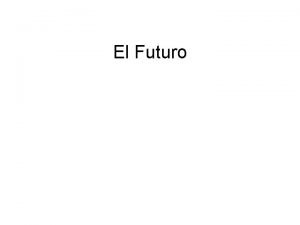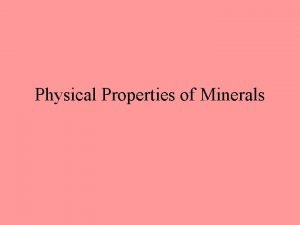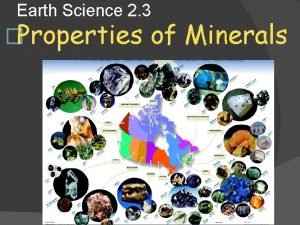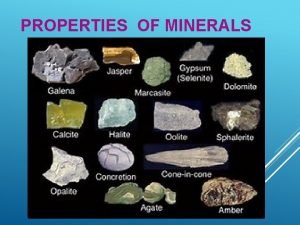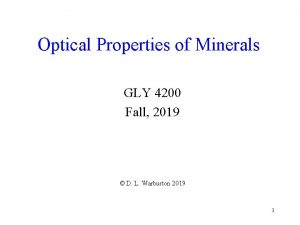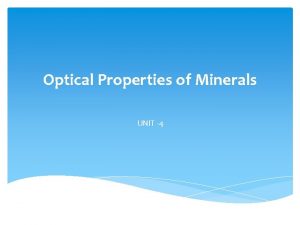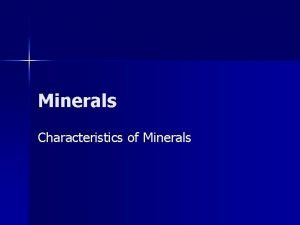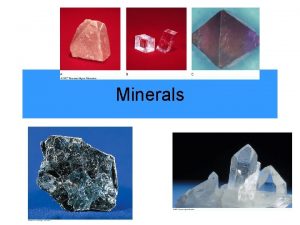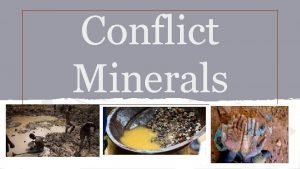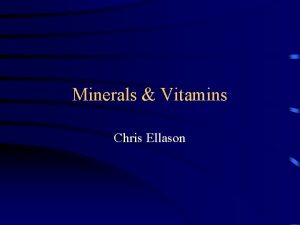Properties of Minerals What are properties you already






- Slides: 6

Properties of Minerals

What are properties you already know? • Density=mass/volume (g/cm� 3) • Hardness (scratch test) • Magnetism

Color and Luster • • Color refers to what color it appears when looking at it. Minerals can be the same composition but have different apparent colors Luster refers to the way a mineral reflects light Luster terms are – – – Metallic (also known as splendent) Submetallic Vitreous (also known as glassy) Adamantine (also known as brilliant or diamondlike) Resinous (also known as resinlike) Silky Pearly (also known as mother-of-pearl) Greasy (also known as oily) Pitchy (also known as pitchlike) Waxy (also known as waxlike) Dull (also known as earthy)

Cleavage and Fracture • • Cleavage and fracture refer to a way a mineral breaks into pieces. Cleavage describes how a mineral breaks into flat surfaces (1, 2, 3, or 4 surfaces) Cleavage is determined by the crystal structure of the mineral Cleavage terms: – – • • Cubic (shape looks like a cube) Octahedral (shape like a diamond) Rhombohedral (angles other than 90 degrees) Pinacoidal (breaks in one direction like flat sheets) Fracture describes how a mineral breaks into shapes other than flat surfaces Fracture terms are: – – – Conchoidal (curved, nearly rounded like the inside of a shell) Fibrous (breaks into fibers) Splintery (stiff, sharp, needle-like) Hackly (rough edges) Uneven or irregular (rough, uneven surfaces) * Sometimes minerals can be described as hackly by one person and irregular by another. A mineralogist can tell the difference.

Streak and Hardness • Streak is the color of a crushed mineral's powder. The color of a mineral's powder may differ from the actual color of the mineral. • Almost every mineral has an inherent streak color, no matter what color the actual mineral is. . A streak is useful in distinguishing two minerals with the same color but different streak. • For example, Calcite occurs in many different colors, shapes, and varieties. But every single variety of Calcite has a white streak • Hardness is defined by how well a substance will resist scratching by another substance. • MOHs Hardness Scale: A scale to measure hardness was devised by Austrian mineralogist Frederick (Friedrich) Mohs in 1822, and is the standard scale for measuring hardness.

MOHs Hardness Scale 1. 2. 3. 4. 5. 6. 7. 8. 9. 10. Talc Gypsum Calcite Fluorite Apatite Feldspar Quartz Topaz Corundum Diamond Suppose a mineral scratches Fluorite, but not Apatite, then it has a hardness between 4 and 5.

